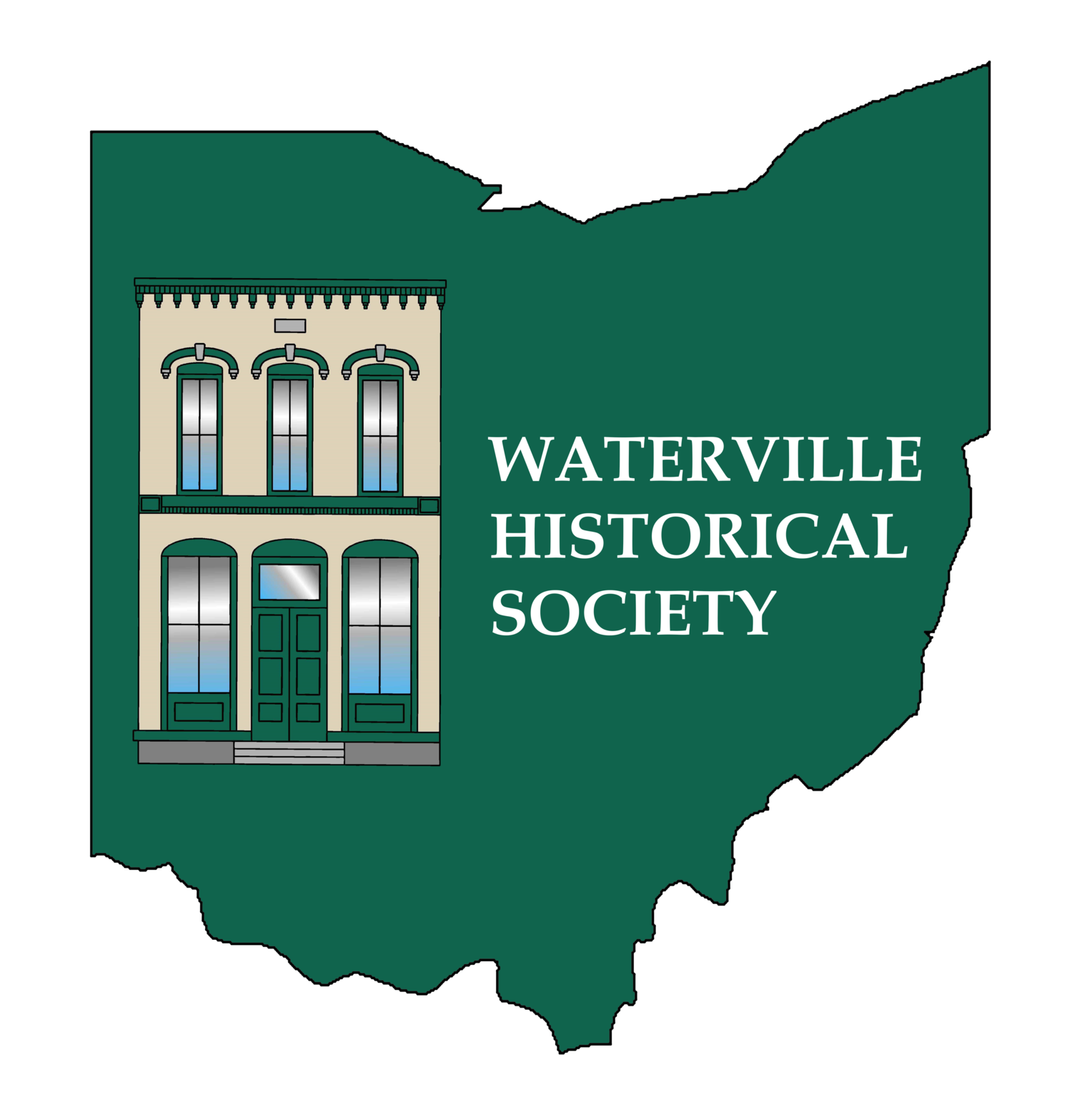The Robbins House
The house, located at 114 South River Road (originally Main Street), was built in 1838 on lot 38 by David Robbins, constable and farmer. Lot 38 was one of the original 50 lots laid out by John Pray in 1831. In 1826 he married Phebe Gunn, who died at age 30 after bearing six children. An 1850 census lists David, age 47, born in Canada, with children: Lucy 18, Elizabeth 16, Wellington 14, and Mary Ette 12. Another daughter, Susan, had married Reuben Hall in 1846, and a son, Rinaldo (1831-1894) was a local merchant. The home now represents a typical pre-Civil War home by its decor, furniture, utensils, etc. Many artifacts have been donated by Society members and friends.
Robbins House ~ 114 S. River Road, Waterville, OH -- newly painted in 2015
Views of the 2021 Displays
Due to our museums being closed thru the exhibit season of 2020, we will again have the same display as planned, but now called “The 75th Anniversary of the End of World War Two, The Covid Delay” in the downstairs of the Robbins House. There are uniforms, pictures, artifacts and stories of local men and women who participated in this war. There are also displays of original front pages of local newspapers with major events of the war.
Upstairs, we have done some reorganizing and are excited to feature artifacts that have not been displayed or at least highlighted in the past. The second floor front room is devoted to an exhibition titled “The Good Old Days” and features almost a dozen different display stations showcasing various items commonplace in area homes and businesses from the mid-1800 to the 1930s and 40s. Have you ever seen a moustache cup, a darning egg, or a “sad iron”? Did you know that a Waterville woman was the first in Ohio to both own and run her own manufacturing business?
The Children’s Bedroom has seen some changes too. Come in and experience a taste of life for youngsters living in the late 1800s and early 1900s. On display are vintage dolls, toys and clothing designed and used by kids in days gone by. Early paper dolls in the 1800s featured boys and stories that told of their heroic adventures accompanied by various changes of costume. Even back then advertisers were quick to urge youngsters to beg their mothers to purchase sewing patterns so kids could dress in costumes like their paper heroes and heroines. Also featured is an Education Corner which contains books, lessons and materials used in area classrooms. Of special interest is a Chautauqua Industrial Art Desk, a revolutionary new invention of the late 19th Century that encouraged home schooling, an emphasis on preparing children for vocations in the arts, and an emphasis on self-expression including the idea that learning could be fun!









